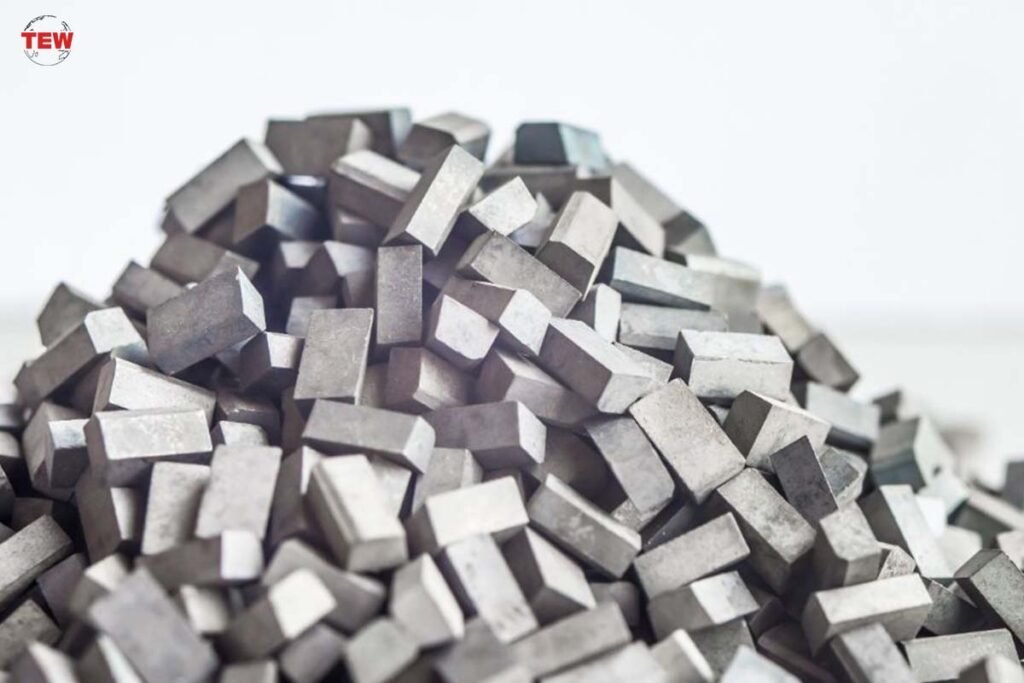Tungsten carbide powder (WC) is a material that is primarily used in the aerospace industry, especially in the production of components and tools. Tungsten carbide has many different applications, including protective gear, cutting tools, grinding wheels, and other abrasive materials.
Tungsten carbide powder is often used as an alternative to tungsten carbide sheets because it has less weight and cost than the sheet form of tungsten carbide. It can be produced by either mechanical or chemical processes, depending on the desired properties of the final product.
Tungsten carbide is a metal powder with the chemical formula WO 4. It has the appearance and properties of metal, but it has a much lower density than most metals. It also does not corrode or rust. The density of tungsten carbide is about 2–4 g/cm3 (0.22–0.32 lb/in3).
You can find tungsten carbide powder price on many websites in different qualities.
3 Things to know before you buy : Tungsten carbide powder
1. What is tungsten carbide powder used for?
This thermodynamically stable macrocrystalline tungsten carbide is used for a variety of purposes ranging from tools for mining, construction, and cutting and wear parts to thermal spray powders, diamond tools, weld rods, and so on.
Tungsten carbide is an extremely hard material that can be machined to high precision and tolerances. It is used in many industrial applications, where it provides enhanced mechanical properties over other materials such as steel or aluminum. Some of these applications include cutting tools, drill bits, saw blades, and grinding wheels. Tungsten carbide abrasives are used in sandpaper coatings to reduce friction between two surfaces when one is moving across the other at high speeds.
Tungsten carbide (WO 4) powder has been used as a substitute for tungsten metal in making tungsten alloys. Its melting point is 3,400°C (6,000°F) and its boiling point is 6,900°C (12,800°F).

Tungsten carbide is a hard metal powder that has many uses. It is used for making cutting tools, burrs, drill bits, and for tungsten carbide pellets which are used further in manufacturing. In the past, it was used in fireworks as well as in ammunition.
The main reason why this material is so useful is that it can be machined into almost any shape needed to create the desired result. It can also be heat treated to make it harder and more durable than other materials on the market. In addition, tungsten carbide is quite resistant to wear and tear over time, which makes it a great choice for applications where durability is important.
Tungsten carbide is also very effective at cutting through metal, which makes it ideal for cutting through steel or other hard materials. This makes it an excellent choice for making knives, saws, and other cutting tools that need to perform well for a long period of time before needing replacement parts or repairs (such as an axe head).
Tungsten carbide is also used for applications where a high speed of cut and finish are required. For example, it can be used as an alternative to diamond in grinding wheels and other wear-resistant applications such as machining stones and cutters. It can also be used as an additive during heat-treating processes to improve the mechanical properties of metals like steel or aluminum.
The product is commonly found in tungsten carbide pellets and tungsten composite rods. In some applications, however, tungsten carbide grit works the best.
2. Is tungsten carbide powder explosive?
Tungsten carbide powder is generally safe under normal conditions. In solid form, too, it poses on fire hazard. It is possible to make it explode with a powerful ignition source but you’d need to fine-tune the conditions a lot, mainly in terms of dispersion, particle size, and total quantity. Such an ignition-ideal condition does not form normally.

Finely divided (pure) tungsten is flammable and can ignite spontaneously when it comes in contact with the air or certain oxidants.
3. Is tungsten carbide powder hazardous?
Tungsten carbide powder is on the hazardous substances list by ACGIH and NIOSH. Tungsten poses significant health hazards when taken in high quantities, which is not likely even with extensive use of tungsten carbide powder as long as safety measures are in place.
However, repeated exposure to pure tungsten in the lungs can cause damage or complications in the longs over the long run. Pulmonary fibrosis or the scarring of the lungs is also common upon repeated exposure. Symptoms of risky exposure to high levels of tungsten include coughing, shortness of breath, and wheezing. In other words, it irritates the nose, throat, and lungs.

Cases of tungsten carbide powder being dangerously toxic or hazardous to humans are extremely rare, nevertheless.
Basic safety measures should be followed in any place that’s using tungsten carbide powder in an industrial capacity as the volume can be high enough to cause damage and other complications in workers. As long as it’s contained properly, the operators don’t inhale large amounts of it, and there’s no large-scale accident involving the powder, you are in the clear.
In conclusion
Tungsten carbide is one of the most common and high-performance abrasives used in the field of grinding. It is also one of the most expensive abrasive materials available, with a price tag ranging from $15 to $20 per pound.
Tungsten carbide is a very hard material, which makes it ideal for cutting, drilling, and grinding applications.
In addition to its performance abilities in different forms like tungsten carbide composite rods, tungsten carbide powder also has some interesting properties that make it one of the best abrasives on the market today.





